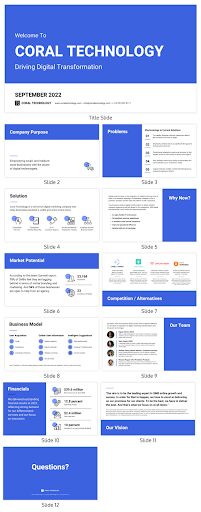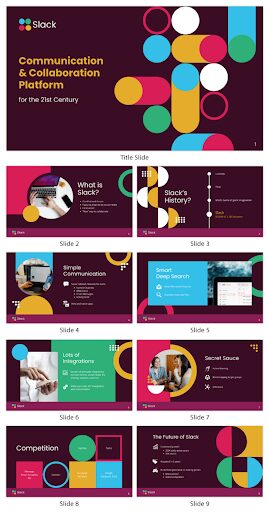A pitch deck is the first presentation of your company given to investors, partners, or even employees. In a pitch deck, you tell a compelling story about your company and generate interest from those interested in joining the team or supporting you financially.
Being able to communicate your ideas properly is very important in today’s competitive world. This means that you have to be able to get people excited about your company or product, which can be hard if you are just starting. So here are 16 do’s and don’ts when creating a pitch deck.
Don’t aim for perfection
Overly perfecting the presentation can do more harm than good. Investors want to see a team with a strong vision and passion, not a polished product. The deck should not be too polished as this gives the impression that you cannot pivot as quickly as necessary.
Do be concise

The number of decks investors receive every day is staggering, so keep it as brief as possible. You need to present the information concisely, or else your audience will lose interest quickly. Instead of creating lengthy explanations for each slide, write bullet points that explain what you’re trying to convey.
Do keep it simple
Many companies make the mistake of thinking they need to convey every part of the business within one deck. While full disclosure is ideal, it’s not always possible or practical. Focus instead on the most important information that will help you answer your audience’s questions. To get you started, you can use this simple template:
Do keep it entertaining
Going along with the point above, creating a pitch deck is not meant to be dull. You want to create visuals that are intriguing and explanatory to maintain the interest of the reader throughout the presentation. A good way to do this is by adding icons and creating interesting charts, graphs, and tables.
Don’t make a generic template
Investors want to see a company that is unique in its own right. So instead of making a general pitch deck template, create one with your branding to stand out from the competition. This will show investors that you aren’t just another “me too” company.
Do make it persuasive

One way you can do this is by adding in client testimonials and case studies. By presenting these to investors, you can have them see the actual impact your business makes on its customers as well as what they can expect if they invest.
Don’t try to fit everything into one deck
This is a mistake many companies make when creating their pitch deck. Instead of cramming everything into one presentation, break up the information with additional documentation such as a website or database. You will have an opportunity to flaunt your company and allow your audience to dive in deeply if they wish.
Don’t forget to explain the story behind your company
Passion and dedication are the best motivators for potential investors. To convey this, make sure you talk about your team and the story behind how your company came to be. You want to inspire them with a story of how you rose against all odds to accomplish an improbable dream. To present your company’s history, you can use this Slack pitch deck:
Do prepare for the demo
Investors are often more interested in seeing how your product works rather than just hearing about it. So instead of presenting ideas or mockups, create a mini demo that shows investors what your product is capable of doing.
Do check it over and over again
You always want to make sure that you check your pitch deck over and over again. It is important to go through the presentation multiple times so that you do not miss any important points, as well as to ensure there are no errors and to ensure your audience understands your message.
Do send it at least a day before

Investors receive hundreds of decks every day which means they have a strict schedule on how fast they can go through them. Send them a day before your meeting, not when you get it ready the same day. This will give your deck enough time to make it to their inbox and not be overlooked among all the other pitches.
Don’t forget about design
Yes, we understand that for some companies design is not as important as the actual content. However, design can be very important for those companies that want to stand out from the competition. Venngage has plenty of pitch deck examples to inspire you.
Don’t focus on jargon
For most companies, especially those on the tech side, jargon is often unavoidable. However, you always want to make sure that investors understand your pitch deck regardless of their technical knowledge. So instead of using tons of acronyms and jargon, break down each term into easily digestible chunks of information for them to read through more quickly.
Do have an introduction

One of the most important parts of a pitch deck is the introduction. The first thing you’ll want to do is grab the audience’s attention with a short story about how your company was founded. As part of your introduction, describe what your team aims to accomplish and why they should consider investing in you now.
Do end with a call-to-action
One thing you don’t want to do is leave the audience with questions. Whether it’s signing up for your product or investing in it, you want them to know what is next after reading your pitch deck.
Don’t copy from others
You may have seen a dozen other companies using an almost identical pitch deck as yours so you decide to do the same thing. However, this is a surefire way for you to fall flat on your face when going in for a meeting with investors. You don’t want them to misunderstand you or what you are trying to accomplish so always be original and put your personal touch into it; since it is all about you anyway!
Read Also:
Guide to Equipping a Quality Workplace






